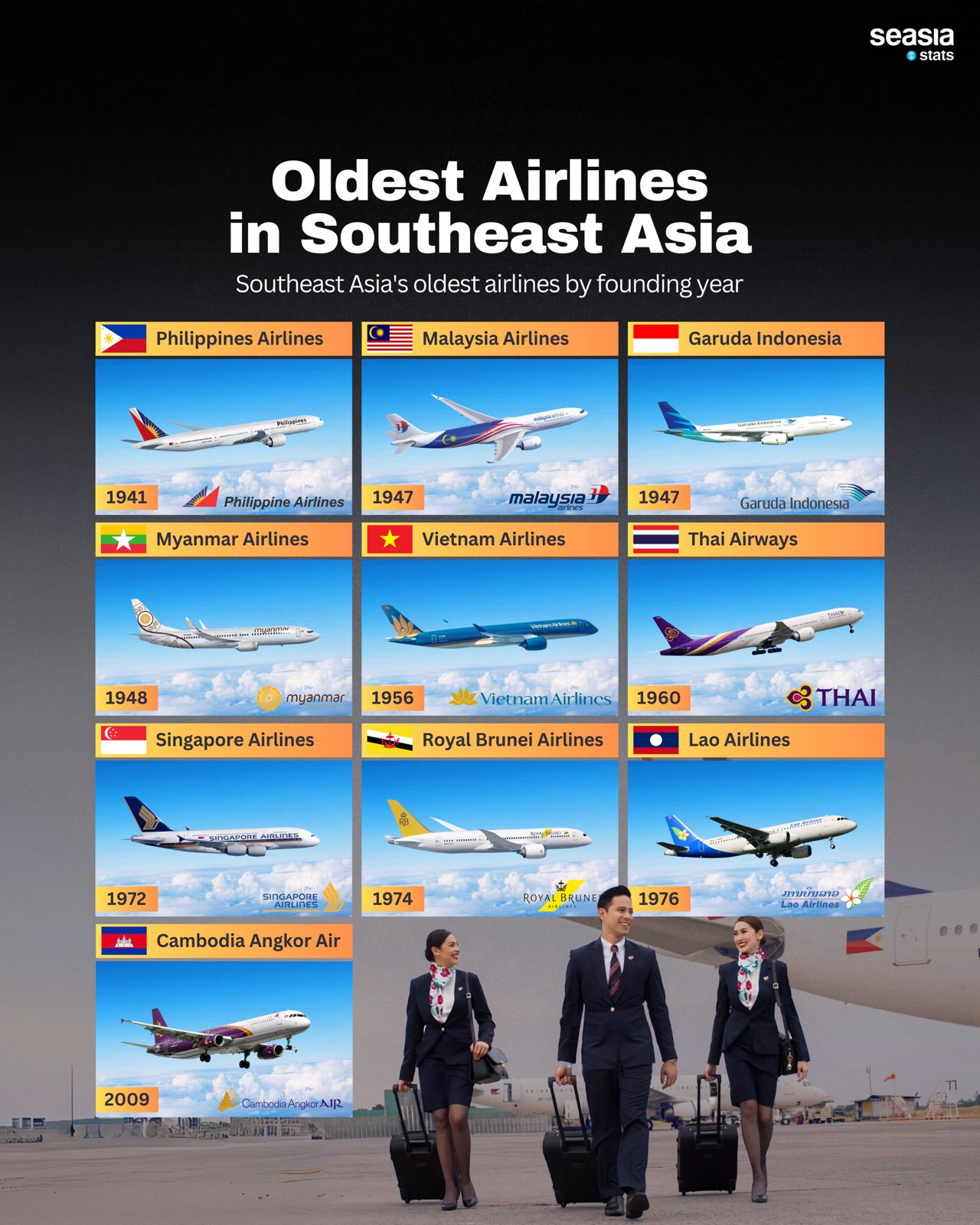Airplanes are a highly popular mode of transportation used by many people for both domestic and international travel. For the residents of Southeast Asia, air travel is a particularly appealing option. This is largely due to the numerous airlines operating routes within the region.
Discussing aviation in Southeast Asia is fascinating, especially when exploring the history of each country's airlines. There are 11 airlines, ranging from the oldest to the youngest, in Southeast Asia. Let's delve into their histories:

- Philippine Airlines
Philippine Airlines has been operating for almost eight decades (83 years), continuing to shine in the skies over the Philippines and abroad. Founded by Andres Soriano, it made its first flight on March 15, 1941. Initially known as Philippine Aerial Taxi Company in 1939, it was rebranded to Philippine Airlines in 1941.Malaysia Airlines
2. Malaysia Airlines
Malaysia Airlines conducted its first commercial flight in 1947. Originally named Malayan Airways Limited, the airline underwent several name changes due to various factors. In 1963, it became Malaysian Airways during the formation of the Federation of Malaysia, later changing to Malaysia Singapore Airlines (MSA) in 1966, and finally to Malaysian Airline System (MAS) in 1972.
3. Garuda Indonesia
Founded in 1949, Garuda Indonesia became a state-owned company in 1950. Initially known as Garuda Indonesian Airways (GIA), it operated 38 aircraft, including 22 DC-3s, 8 Catalinas, and 8 Convair 240s. Today, Garuda Indonesia Group, which includes several airlines, operates a fleet of 210 aircraft.
4. Myanmar Airways
Myanmar Airways, founded in 1948, has been in operation for 76 years. Initially named Union of Burma Airways (UBA), it is one of the most historic airlines in Asia. In 1989, it was renamed Myanmar Airways, retaining its iconic UB airline code.
5. Vietnam Airlines
Vietnam Airlines was established in 1956, marking the birth of the aviation sector in Vietnam. Initially, it operated with five propeller planes: the Il 14, AN 2, and Aero 45, on its first domestic route. In 1993, it became the national flag carrier, officially known as Vietnam Airlines.
6. Thai Airways
Thai Airways, owned by the Kingdom of Thailand, facilitates domestic, regional, and intercontinental flights from its hub in Bangkok. Established in 1960 as a joint venture between the domestic Thai Airways Company (TAC) and Scandinavian Airlines System (SAS), it has grown significantly since.
7. Singapore Airlines
In 1972, Malaysia Singapore Airlines split into two separate entities, one of which became Singapore Airlines as we know it today. Its first Airbus A300 Superbus flew to Kuala Lumpur and Jakarta on February 1, 1981. In mid-October 2017, Singapore Airlines received the world's first Airbus A380 and commenced its first flight from Singapore to Sydney on October 25, 2017.
8. Royal Brunei Airlines
Founded in 1974, Royal Brunei Airlines is an independent company owned by the Government of Brunei Darussalam. It commenced its first flight in 1975, flying from Bandar Seri Begawan to Singapore. In 2018, it received a four-star airline rating, earning praise and recognition.
9. Lao Airlines
Lao Airlines, the national airline of the Lao People's Democratic Republic, was established in 1976. It was formed from the merger of Royal Air Lao and Lao Airlines, initially operating Douglas DC-3 and DCS-4 aircraft for domestic and international routes, supplemented by helicopters for remote areas in Laos.
10. Cambodia Angkor Air
Founded in 2009 and headquartered in Phnom Penh, Cambodia Angkor Air operates under the slogan "Proudly Serving the Kingdom." It has a fleet of five aircraft, including Airbus A320, Airbus A321, and ATR 72, serving both domestic and international routes.
The article provides an overview of the history and significance of major Southeast Asian airlines, highlighting their evolution and contributions to regional and international travel.


















